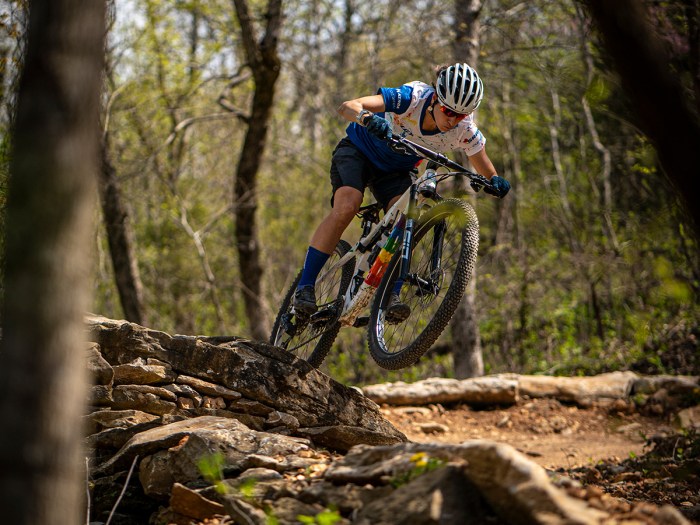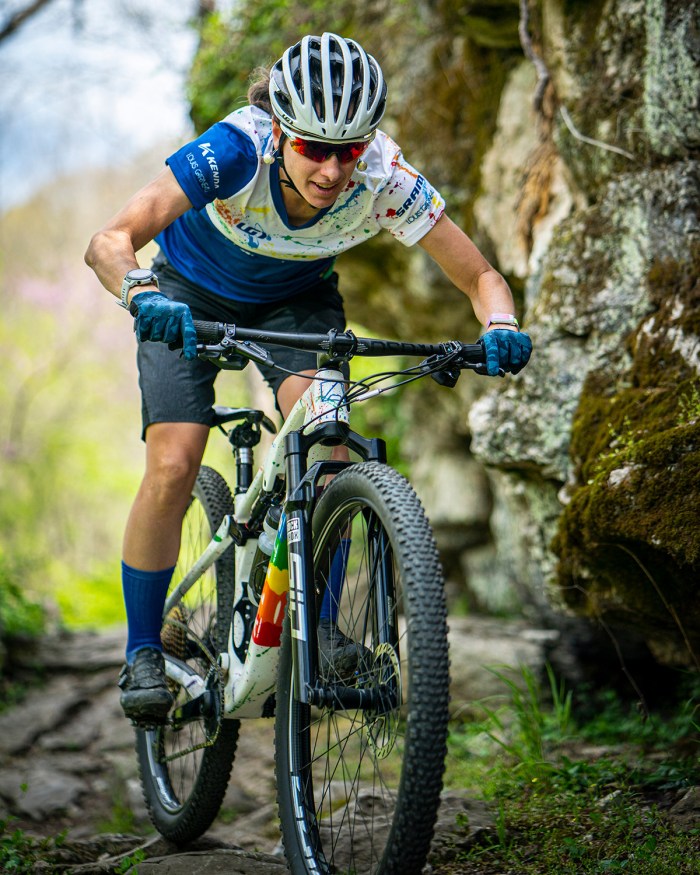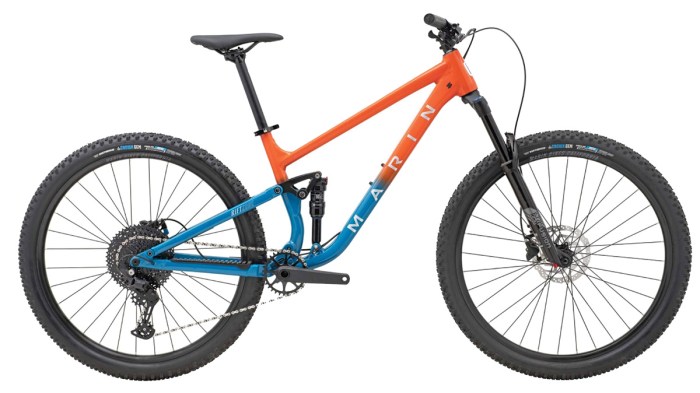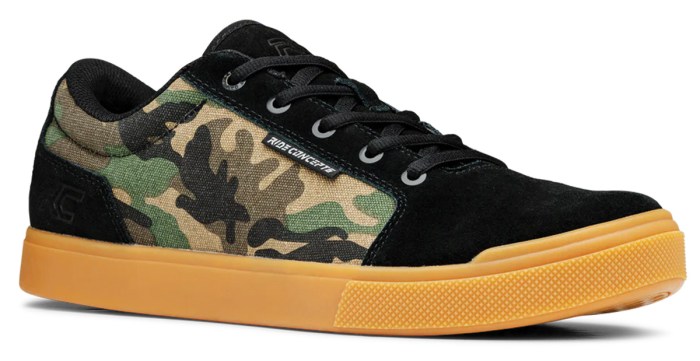What You Need to Get Started Mountain Biking

Mountain biking mixes exploring nature with high-speed fun. It’s a great way to conquer rugged trails, and it’s a lot quicker than going on foot.
“On a mountain bike, you can cover a lot of ground,” says Lea Davison, a cross-country mountain biker and two-time Olympian. “You can challenge yourself or have fun with friends, and you can set and achieve goals and overcome obstacles.”
Here are a few things you should know before buying a mountain bike.
MOUNTAIN BIKE BASICS
To get into mountain biking, you’ll need a knobby-tire, flat-bar bike, new or used. Most mountain bikes have front suspension, though many have rear suspension too. Suspension lets the wheels move independently, smoothing out the trail and cushioning the landing when you hop off an obstacle. Typically, front suspension-only bikes, called “hard tails,” cost less than full-suspension bikes, but full-suspension bikes offer smoother riding, making hard trails easier to handle.

Lea Davison, a cross-country mountain biker and two-time Olympian.
No matter what sort of bike you’re looking for, here are a few tips to keep in mind:
WHERE TO SHOP FOR A MOUNTAIN BIKE
If you’re buying a new bike, shop for sales. You can also consider a certified pre-owned used bike, like those listed on TheProsCloset.com. In addition to sales and used bikes, you can save some money by looking at bikes with fewer features.
Try shopping at your local bike shop. The salespeople there will be so much more knowledgeable. When talking to salespeople, be honest about your biking skills and where you plan to ride. That way, they can point you toward the best bike for your skill level.

One quality bike is MARIN BIKES’ RIFT ZONE 1 ($1,799, marinbikes.com) that comes with either 27.5- or 29-inch wheels.
QUALITY BIKES AND COMPONENTS
You may see a really cool-looking, full-suspension bicycle for a good price, but it could be really heavy and not very durable. Look for models that are lighter and more durable.
As you push the pedals, it’s the bike’s components (gears and other moving parts) that move you down the trail. If you buy a bike with poor-quality components, you probably won’t get very far. Make sure your bike is outfitted with higher quality gears and components.
CHECK THE FIT AND TEST DRIVE
Before purchasing any bike, be sure it fits. Someone at the shop should help you find the correct bike for your size.
You should be able to stand over the top tube with both feet flat on the ground. You should have at least a couple of inches of room, so you can hop on and off easily. It’ll also make the bike more maneuverable. And look for a bike with an adjustable-height seat so the bike can grow with you.
Test ride as many different models as you can. Try doing tight turns and sprinting on the bike. If you can, ride up a couple of curbs, too. Pay special attention to how the bike turns and shifts.

GIRO’S FIXTURE MIPS II HELMETS ($74.95, giro.com) are designed to move slightly, diverting the impact away from your head and reducing possible brain damage.
HELMET AND SHOES
You need a good helmet and closed-toed shoes. Buy a helmet with rotational protection, like MIPS, which stands for Multidirectional Impact Protection System. Do not buy a used helmet. Most helmets are designed to take a single impact, and then they need to be replaced.
Flat pedals are the way to go for beginners. Use the ones that come with the bike, or upgrade to pedals that have more aggressive spikes. They’ll keep your feet from slipping off.
You can ride in sneakers, but a bike-specific shoe will give you better control. Again, look for a shoe in your size that matches the shape of your foot.

RIDE CONCEPTS’ VICE ($100, rideconcepts.com)
SAFETY CHECK AND PRACTICE
Before you go mountain biking, do a safety check. Check that your tires are properly inflated, the brakes work and are adjusted, the chain is lubricated, and the saddle and handlebars fit.
Ride around your yard or a park before hitting mountain trails. You’ll get a feel for the bike and can practice shifting. If the bike has a dropper post for the seat, practice raising and lowering it until those actions become intuitive. Keep your eyes forward and your arms bent. It’s super important to look where you want to go and avoid looking where you don’t want to go.
Wear the proper safety equipment, and start with easier trails. Mountain biking is all about progression. Ease into it and build your skills, and every day on the bike can be a great one.
THE BIKER’S ESSENTIALS
Don’t leave home for a ride without these important pieces of biking gear:
- Helmet
- Water Bottle
- Tire pump
- Extra inner tube and/or patch kit
- Tire and chain tools
- Bike shorts (optional)
- Gloves
- Glasses/goggles (optional)
i have an old schwinn ranger the brake pads are worn and it won’t change to the third gear should i get a new bike?
If you’ve got V brakes and know how to use a hex wrench, the brakes should be a pretty easy fix because replacement pads aren’t expensive. As far as changing to third gear, you might need to adjust the derailleur or the bike might just be getting on in years.
Looking for a new bike, wrote down the essential things for getting a bike. It all sounds like good advice. Any further advice?
I use a trek fuel ex and I love it
Nice to see someone who knows their bikes on here. I am on a local XC race team, and I am about to buy a Canyon Neuron trail bike.
Oh nice I just got a Specialized Status 140. I am also on a NICA team.